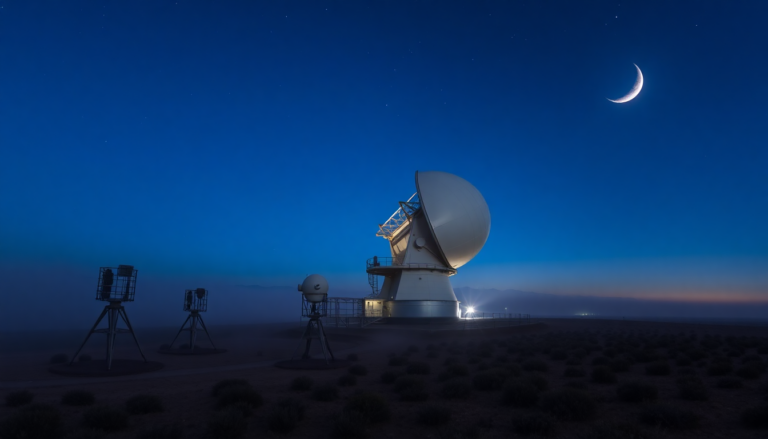Argomenti trattati
Welcome to the exciting world of modern astronomy, where we’re witnessing a data revolution unlike anything we’ve seen before! At the heart of this transformation is the Vera C. Rubin Observatory in Chile. But what makes this facility so special? It’s not just another telescope; it’s a hub of innovation that is redefining how we capture, store, and analyze the cosmos. Imagine taking about 1,000 images of the night sky every day—that’s the ambitious goal of this observatory, and the results promise to reshape our understanding of the universe.
The magnitude of astronomical data collection
Let’s dive into the details. Each stunning image produced by the observatory’s cutting-edge camera boasts an impressive 3.2 billion pixels, capturing an incredible range of 65,536 shades of gray. The sheer detail of these images results in an average size of around 6.4 GB each! With so much data being generated, a robust infrastructure is essential to handle the influx. The images are automatically sent to nearby servers, freeing the observatory to explore new areas of the sky while maintaining a steady stream of data collection. Isn’t that fascinating?
This isn’t just a short-term project; the observatory aims to revisit the same celestial regions repeatedly over the next decade. The team anticipates generating at least 60 billion bytes—that’s about 60,000 terabytes—of data by the time the project wraps up. However, estimates suggest the final total could escalate to a staggering 500,000 terabytes due to various factors impacting data collection. Just imagine the treasure trove of information they’ll be unearthing!
To manage this colossal volume of data, a specialized data center has been built on-site, capable of storing at least a month’s worth of information. This local storage acts as a safety net against any unexpected network hiccups, ensuring that no precious data slips through the cracks. Plus, the ability to analyze data right there before sending it off for further examination offers a competitive edge in the fast-paced realm of astronomy.
Data transmission and analysis processes
So, what happens after the data is collected? It makes its way to the SLAC National Accelerator Laboratory in Menlo Park, California, over an extensive network of fiber optic cables stretching about 60 miles. This connection is crucial for transferring the images to researchers, who will compare them against older photographs of the same regions in space. By pinpointing significant changes or variances, astronomers can dive deeper into the mysteries of celestial phenomena. Isn’t it incredible how technology bridges gaps in our understanding?
However, the sheer volume of data presents its own set of challenges. As Dr. O’Mullane, the observatory’s associate director of data production, notes, the analysis of these vast datasets will be streamlined with the help of artificial intelligence. By leveraging AI tools, researchers can process and interpret data much more efficiently than traditional methods, allowing them to focus on making groundbreaking discoveries rather than getting lost in the details of data handling.
The future of astronomical research
The implications of this data revolution extend far beyond numbers; they hold the potential for groundbreaking discoveries that could redefine our understanding of the universe. As the Vera C. Rubin Observatory continues its ambitious project, it stands as a significant leap forward in astronomical research and data analysis. The systematic observation of the same regions of space over time will yield insights into cosmic evolution, dark matter, and other phenomena that have long puzzled scientists. Don’t you want to be part of this journey?
In conclusion, the Vera C. Rubin Observatory is leading the charge in a data-driven transformation of astronomy. Its capacity to capture and process vast amounts of information not only enhances our understanding of the cosmos but also sets the stage for innovative research methodologies. As we gaze into the future, the role of data in astronomy is bound to grow even more critical, opening up new avenues for exploration and discovery. Are you ready to witness the next big breakthroughs in our universe?

